Of Temple Trails and Tales!
Posted on : January 20, 2020Author : AGA Admin
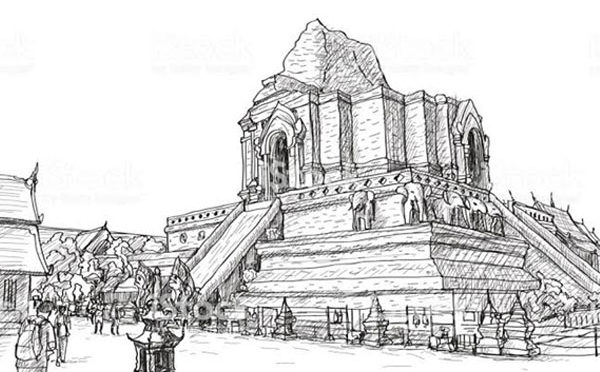
Thailand is typically identified as an affordable tropical retreat with its long coastline, picturesque forest-cum islands “anchored in azure waters”, extending impeccable hospitality coupled with the fabled Thai cuisine to its ever-increasing swarm of tourists. At the same time, for those with a partiality for art and culture, the kingdom of Thailand offers an infinite range of sparkling temples and “golden Buddhas.” A fleeting glimpse of a few of these splendid sacred spaces is offered in this travel piece.
It was 8:30 in the morning when we were speeding down the Chao Phraya river in a small ferry. Chao Phraya translates to “The River of Kings” and affords tourists a breathtaking view of the Bangkok skyline. And the view is unique. Among the modern buildings, there are temples that glitter in the sun. The people of Thailand take pride in their temples and donate money to maintain the temples and support the monks who reside there.
Our first stop was Wat Arun, also known as the Temple of Dawn. The temple derives its name from the Hindu god Aruna, the charioteer of the Sun god. The pearl-white temple is made from porcelain tiles that were used as ballast by Chinese ships and tiny pieces of colored glass. The ornate central spire stands at over 260 feet and is said to symbolize Mount Meru, the center of the physical and spiritual universes in Hindu and Buddhist cosmology. The central spire has three tiers to represent hell, earth, and heaven and is adorned with repeating sculptures of deities that seem to be holding up each level.
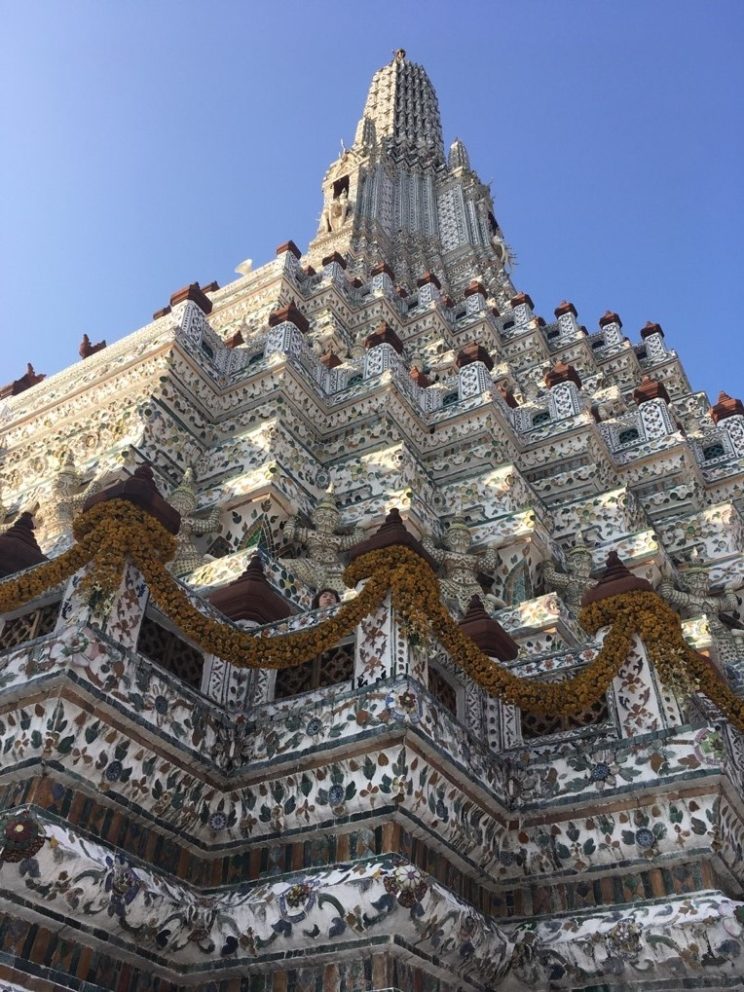
The central spire of Wat Arun.
Our next stop was Wat Traimit also known as the temple of the Golden Buddha. We had reached the temple on December 30th, and so preparations for New Year’s Eve were in full swing. The area in front of the temple complex was covered with lines of string that were being hung by Buddhist monks. Our tour guide explained to us that although Bangkok is flooded by tourists who want to party on New Year’s Eve, Thai people spend their time praying all night holding the bits of string.
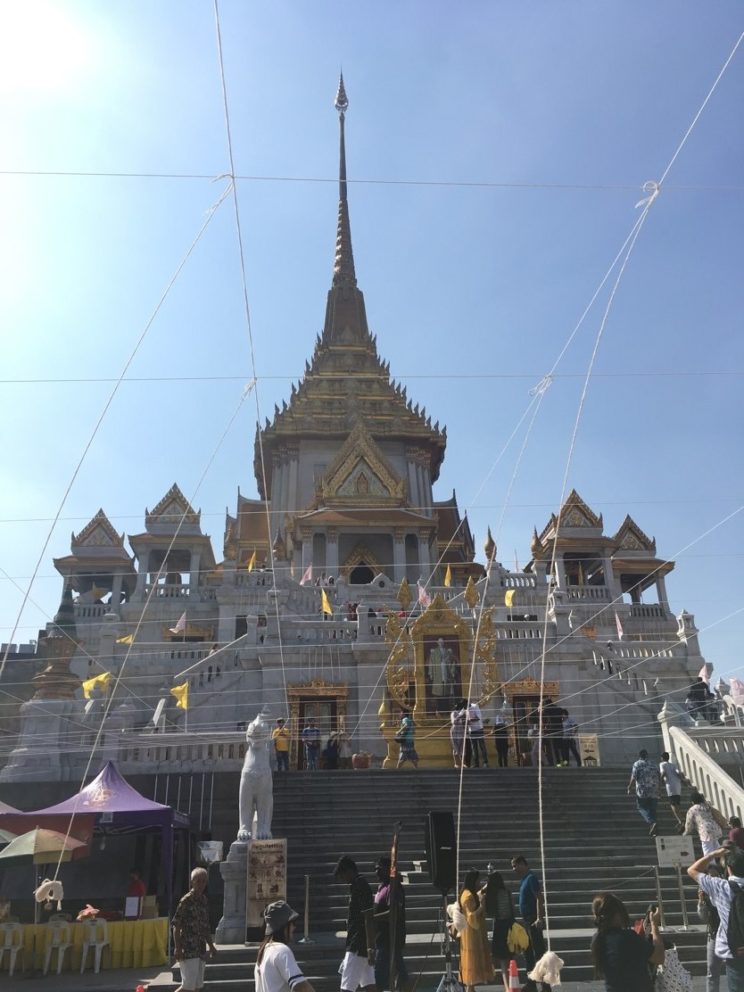
The array of strings in front of Wat Traimit.
Wat Traimit, meaning the “Three Friends Temple” after a trio of late-19th century donors, is home to the largest solid gold Buddha image in the world. Standing at 15 feet tall and weighing 5,500 kgs, the Buddha is awe-inspiring. The story of the statue was equally fascinating. It was built in the 13th century and covered with a thick layer of stucco to prevent it from being stolen by invaders. The ruse worked so well that for 200 years everyone forgot that there was a golden Buddha encased within. When the statue was moved to Wat Traimit, the statue fell, chipping off the plaster, and revealing the gold underneath. It was also discovered that the statue consists of nine parts that fit together and the plaster contained a key that could be used to disassemble the statue for transportation.
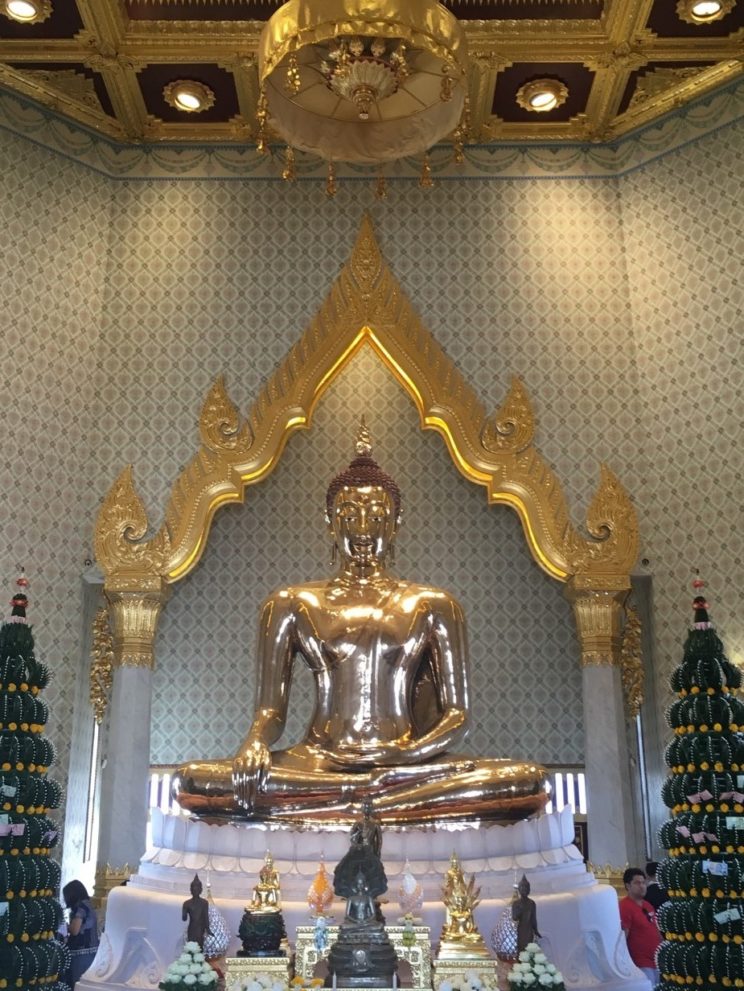
The Golden Budhha
The Golden Buddha: the body of the statue is made of 40% pure gold, the chin to the forehead is 80% pure, and the hair and the topknot are 99% pure gold.
Since Wat Traimit is at one end of Chinatown, we briefly stopped there for a quick snack of Durian, an infamous fruit that resembles Jackfruit, and Kela Roti, fried dough covered with chocolate, bananas, and splashes of condensed milk. After cooling off with some fresh fruit juice, we headed to our next destination Wat Pho.
Also known as the Temple of the Reclining Buddha, Wat Pho is actually a temple complex and houses the largest collection of Buddha images in Thailand. The temple was also the earliest center for public education in Thailand and the birthplace of the traditional Thai massage. The temple complex is large and contains several interesting structures including chedis, which are mound-like structures that are used as places of meditation.
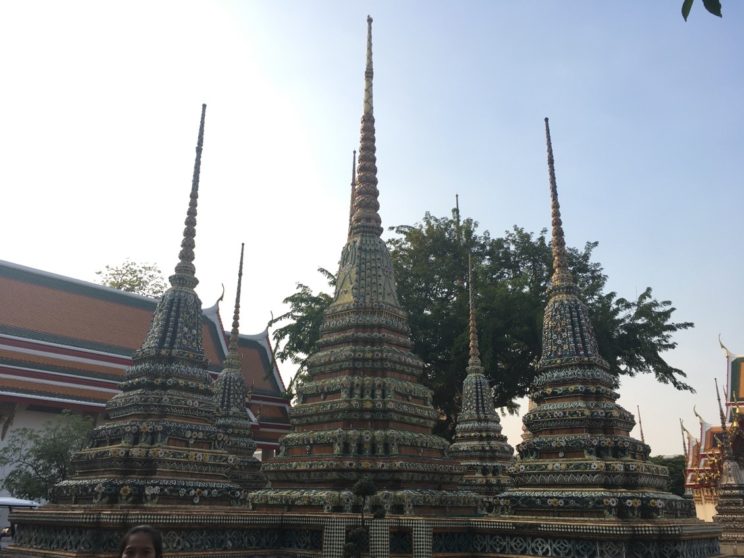
The smaller chedis at Wat Pho. The base of these structures usually contains the ashes of the royal family.
The chapel that houses the reclining Buddha is filled with the tinkling sounds of coins being dropped in bronze bowls. There are 108 bowls that line the corridors, representing the 108 characters of Buddha. It is believed that dropping coins in these bowls brings good fortune. The reclining Buddha itself stretches across 46 m and is 15 m high. Unlike the golden Buddha, this Buddha has a brick core that has been covered by a layer of gold. The feet of the Buddha are also captivating. The soles are inlaid with mother-of-pearl and are divided into 108 panels containing images of flowers, elephants, and tigers.
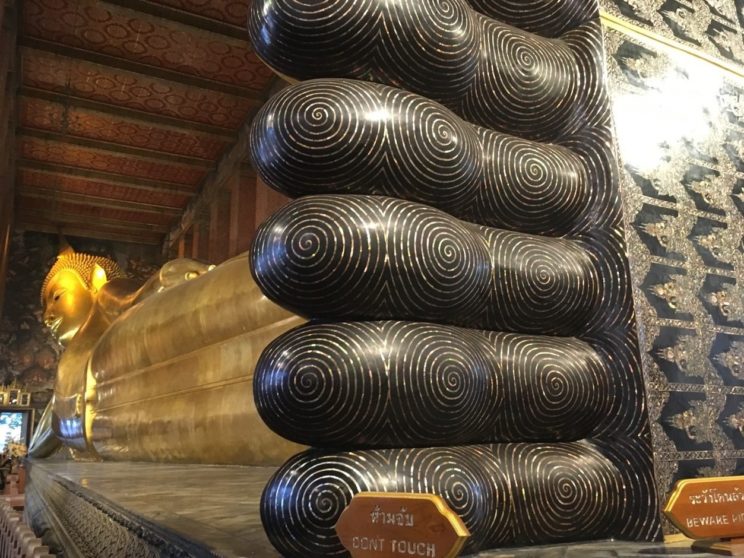
The reclining Buddha represents the entry of Buddha into Nirvana and the end of all reincarnations.
Our last stop for the day was Wat Saket, roughly translated as “wash hair” since it is believed that the king stopped there to take a bath and wash his hair on his way back from war. The complex is famous for the “Golden Mount”, an 80-meter-high hill with a glided stupa on the top. There are 318 steps that lead to the top, which was once the highest point in Bangkok. The walkway is lined with statues representing various Thai deities as well as bells and gongs that are rung for good luck. Once we reached the top, we were afforded a spectacular, panoramic view of the Bangkok skyline.
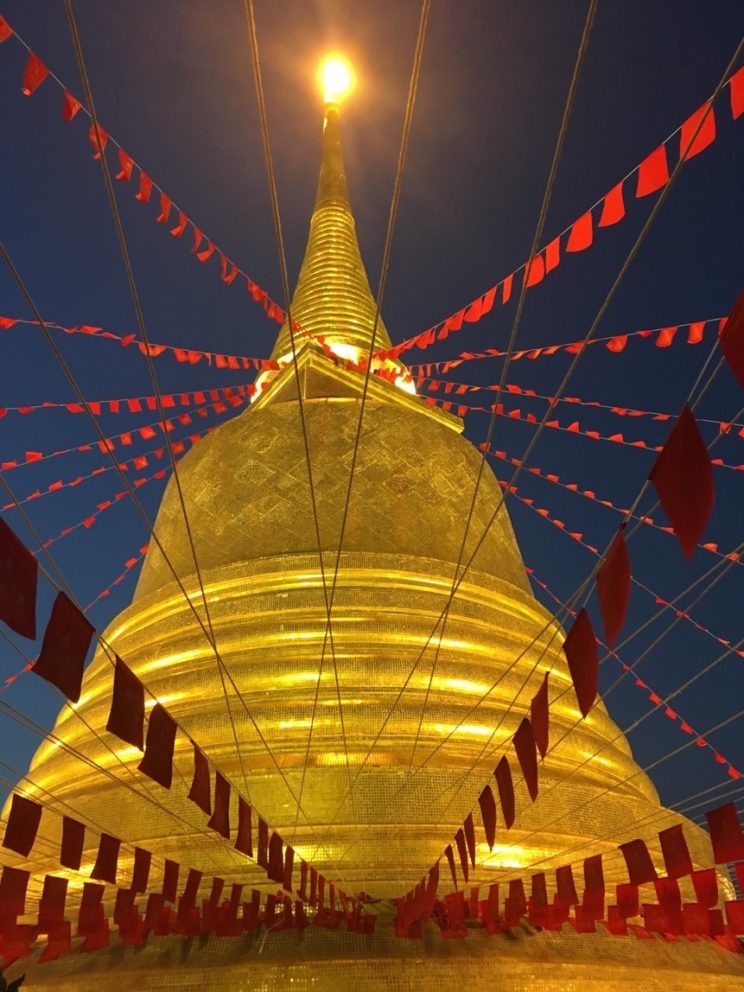
The Golden Mount
Our entire day of temple hopping left very little time for a meal. To compensate, after the climb, we rewarded ourselves with glasses of ice-cold Thai ice tea and steaming plates of Pad Thai at a small hole-in-the-wall café opposite Wat Saket. Not a bad way to end a day!
Ananya Sen
Graduate Student, Department of Microbiology
University of Illinois, Urbana-Champaign.


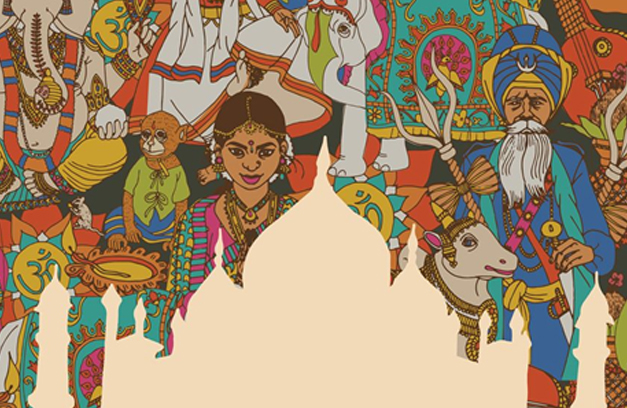


Highly enerցetic article, I loᴠed that bit. Will there be a
part 2?